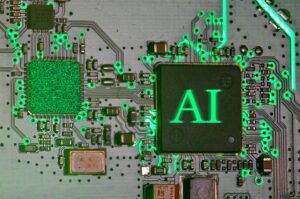How Green Tech is Transforming the Electronics Manufacturing Industry
Ahmad Jubail December 18, 2024 0The Growing Need for Sustainability
The electronics industry has long been associated with a significant environmental footprint, with high levels of energy consumption, resource extraction, and electronic waste (e-waste). With the rapid pace of technological advancement, manufacturers often face challenges related to energy inefficiency, resource depletion, and pollution.
Green tech offers solutions to these problems by focusing on environmentally friendly manufacturing processes, energy efficiency, recycling, and the reduction of harmful substances. By embracing sustainable practices, the industry is taking significant steps toward reducing its impact on the planet while improving its bottom line.
Eco-Friendly Manufacturing Processes
One of the most notable contributions of green tech to electronics manufacturing is the development of eco-friendly production processes. Traditional manufacturing methods often involve the use of hazardous chemicals and large amounts of water and energy. In contrast, green tech innovations prioritize the use of safer, more sustainable materials and energy-efficient technologies.
For instance, some companies are shifting towards using water-based solvents instead of toxic chemicals in their production processes, reducing pollution and minimizing health risks for workers. Additionally, many manufacturers are adopting energy-efficient equipment and renewable energy sources, such as solar and wind power, to reduce their carbon footprints.
Energy-Efficient Electronics
Energy efficiency has become a major priority in the design and production of electronics. From smartphones to computers and televisions, manufacturers are developing energy-efficient products that consume less power during use and have a longer lifespan. This not only helps consumers save on electricity bills but also reduces the overall demand for energy, contributing to a greener planet.
For example, energy-efficient processors and power-saving technologies are being integrated into modern electronics, resulting in devices that consume less power while maintaining high performance. Additionally, smart devices equipped with energy-monitoring capabilities can help consumers track and optimize their energy use.
Recycling and E-Waste Management
The issue of e-waste has become one of the most pressing environmental challenges of the digital age. According to the United Nations, approximately 50 million metric tons of e-waste are generated globally every year, and only a small fraction of it is recycled properly. Improper disposal of e-waste leads to the release of toxic substances such as lead, mercury, and cadmium, which can harm human health and the environment.
Green tech is making strides in improving e-waste recycling processes. Companies are developing new technologies that can more efficiently extract valuable materials like gold, silver, and copper from old electronics, reducing the need for mining and lessening the environmental impact. Additionally, many manufacturers are creating products with recycling in mind, designing them for easier disassembly and reuse of components.
Sustainable Materials and Design
Another key area where green tech is making a difference is in the materials used to manufacture electronic devices. Traditionally, electronics have been made using metals, plastics, and other materials that are not always sustainable. Green tech encourages the use of alternative, eco-friendly materials such as biodegradable plastics, recycled metals, and sustainable packaging.
Some manufacturers are also adopting modular designs, which make it easier for consumers to repair or upgrade their devices rather than dispose of them. This reduces waste and extends the lifespan of products, which in turn lowers the overall environmental impact.
The Role of Circular Economy
A circular economy is a concept that focuses on reducing waste by reusing and recycling products and materials. In the context of electronics manufacturing, the circular economy model is gaining momentum as companies move away from the traditional linear model of “take, make, dispose.”
Instead of throwing away old devices, manufacturers and consumers are encouraged to recycle and repurpose materials, reducing the need for virgin resources. Companies like Apple and Dell have already implemented take-back programs, where customers can trade in their old devices in exchange for discounts or new products. This not only reduces waste but also ensures that valuable materials are recycled and reused.
Green Tech and Innovation
The integration of green tech into electronics manufacturing is also driving innovation. As manufacturers seek new ways to reduce energy consumption, minimize waste, and improve efficiency, they are developing cutting-edge technologies that benefit both the environment and consumers. For example, advancements in battery technology are allowing for the development of longer-lasting and faster-charging batteries, which can reduce the need for frequent replacements and help extend the life of electronic devices.
Moreover, the rise of the Internet of Things (IoT) is enabling smarter, more sustainable electronics that can communicate with each other to optimize energy use. Smart homes, for example, can automatically adjust heating, cooling, and lighting systems based on real-time data, helping to reduce overall energy consumption.
The Future of Green Tech in Electronics Manufacturing
As the demand for sustainable electronics continues to grow, manufacturers will face increasing pressure to adopt green tech solutions. Regulatory frameworks and environmental policies are likely to become more stringent, encouraging companies to innovate and invest in greener technologies. The increasing awareness among consumers about the environmental impact of their purchasing decisions is also playing a significant role in shaping the future of the industry.
In the coming years, we can expect to see more advancements in eco-friendly materials, energy-efficient designs, and sustainable manufacturing processes. Green tech is not just a trend; it is becoming a fundamental part of the electronics manufacturing industry’s long-term strategy for success.
Conclusion
Green tech is revolutionizing the electronics manufacturing industry, offering sustainable solutions that reduce the environmental impact of production, improve energy efficiency, and encourage responsible disposal and recycling. As companies continue to adopt innovative technologies and practices, the future of electronics manufacturing looks brighter and more sustainable. By embracing green tech, the industry is not only helping to protect the planet but also driving innovation that benefits consumers and businesses alike.





